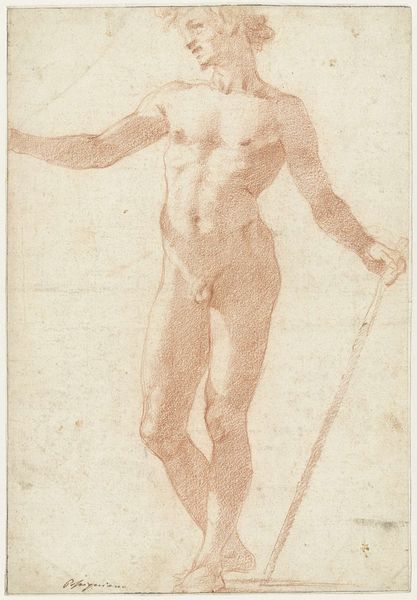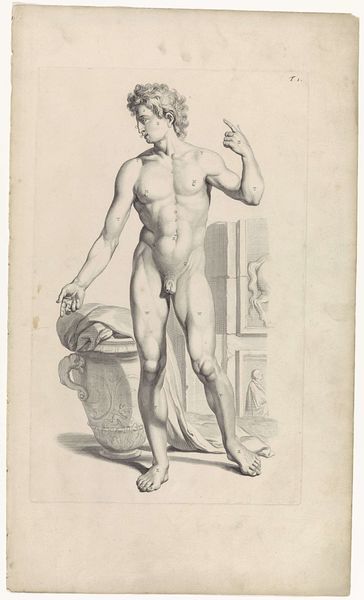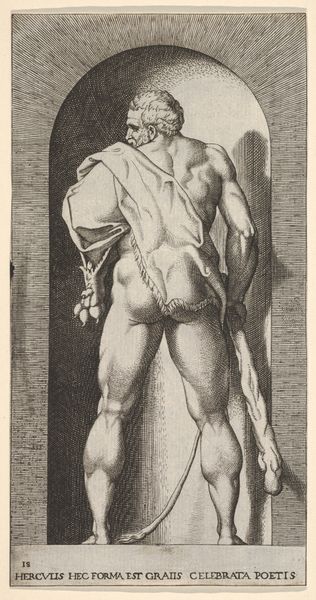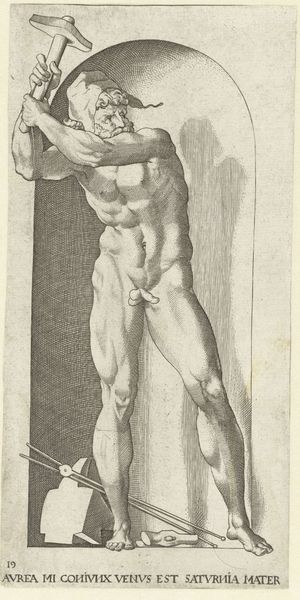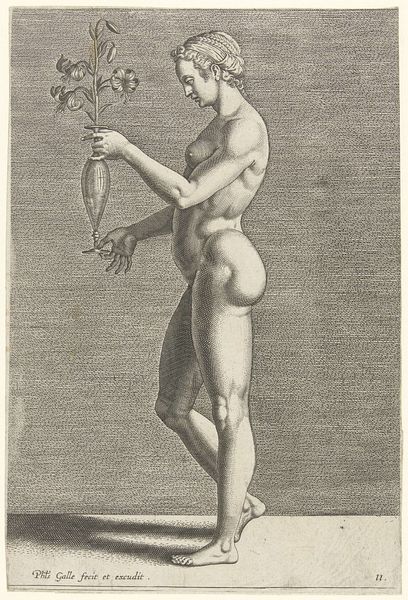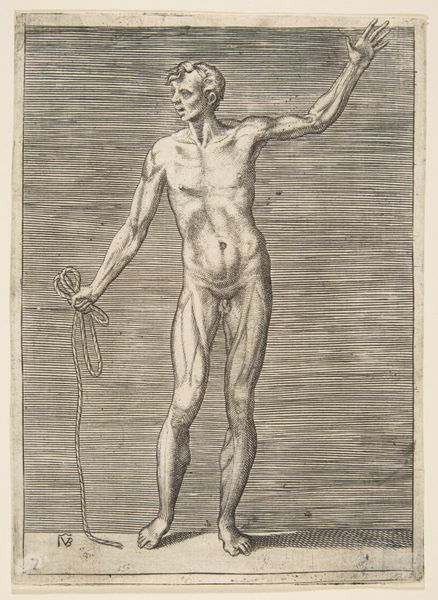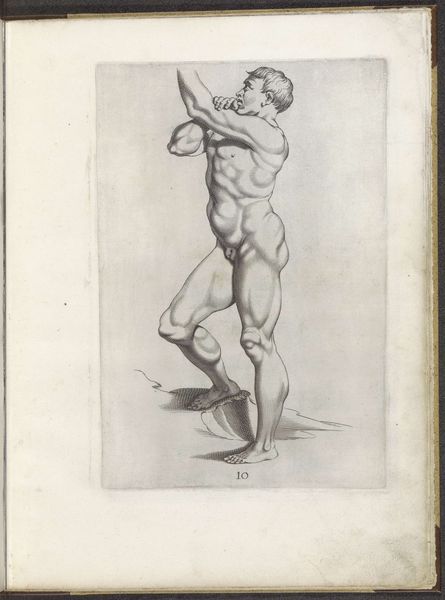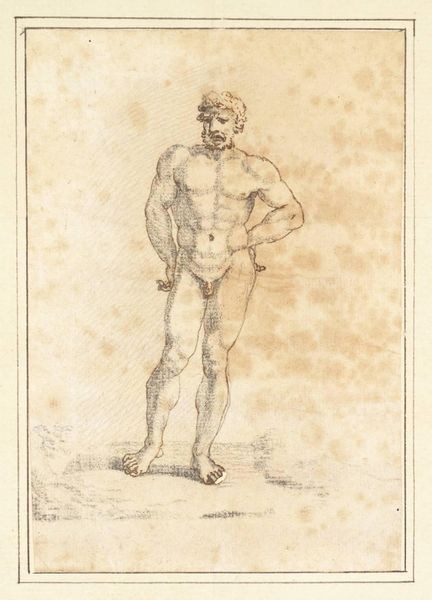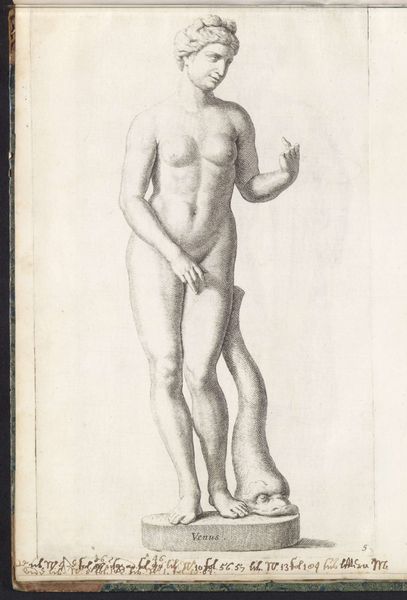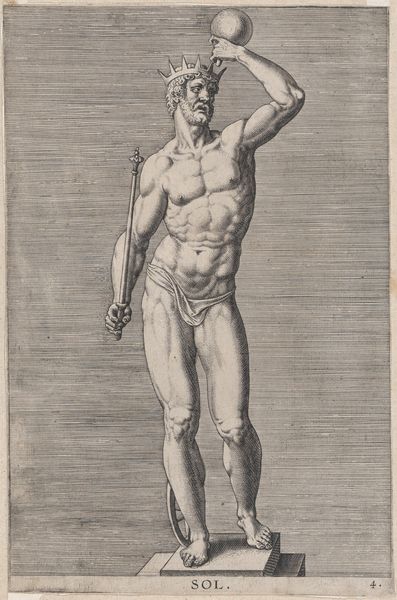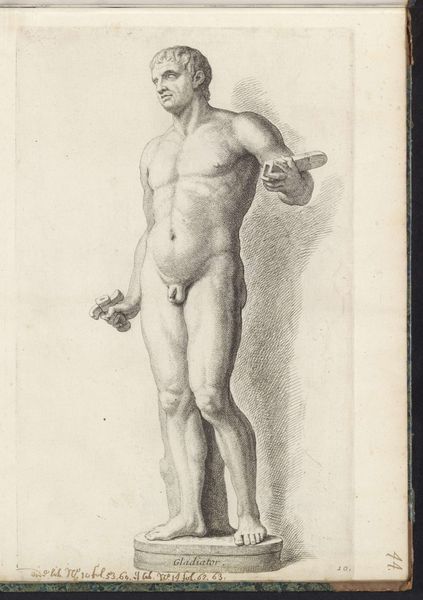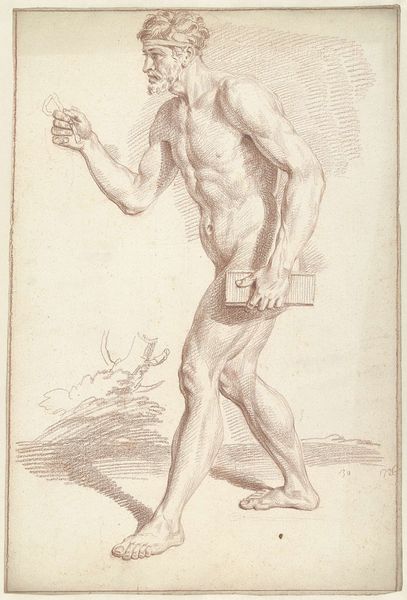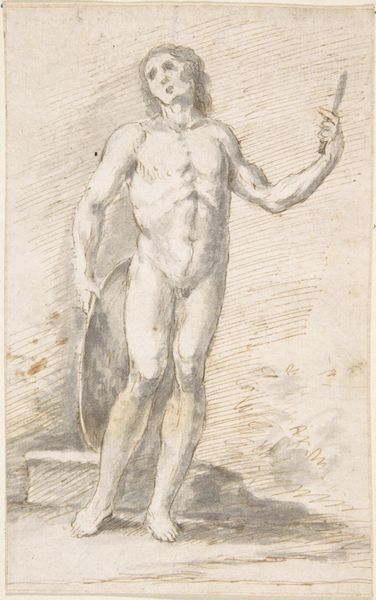
drawing, print, pencil, engraving
#
pencil drawn
#
drawing
#
light pencil work
#
baroque
# print
#
pencil sketch
#
figuration
#
pencil
#
sketchbook drawing
#
pencil work
#
nude
#
engraving
Dimensions: height 220 mm, width 109 mm
Copyright: Rijks Museum: Open Domain
Editor: Here we have Jan de Bisschop’s "Naakte man staand op den rug gezien," created between 1668 and 1671. It's a pencil drawing and engraving. The man’s back seems intensely rendered – it feels very powerful in its musculature. What strikes you when you look at this work? Curator: The intense rendering directs our attention not just to the form itself, but to the labor involved. Consider the materials: pencil and engraving tools, implements of a specific kind of artisanal production in the 17th century. How does the starkness of the line challenge typical baroque ideas of idealized form? Editor: It definitely feels more like a study, a preparation perhaps? But if it's a print, that implies wider distribution... how does that play into the social context? Curator: Precisely. Think about the circulation of prints. They democratized images, made them available beyond the elite. A drawing like this could serve as both artistic exercise and a commodity for instruction or inspiration. How might the nude form be consumed differently depending on its accessibility and context? Is it about appreciating an individual body or using it for the purpose of training artists? Editor: That makes me think about the market for anatomical studies, and who was commissioning and buying them. It gives the image a whole other dimension beyond just aesthetic appreciation. Curator: Exactly. It compels us to acknowledge not only the aesthetic representation of a man but the means by which that representation became a tangible object within a network of economic exchange and artistic training. Something easily lost, yet entirely shaping of art as it stands today. Editor: This has shifted my focus. I’m seeing the networks of production, the flow of materials and ideas and not just the lone artist's genius. Thank you!
Comments
No comments
Be the first to comment and join the conversation on the ultimate creative platform.
